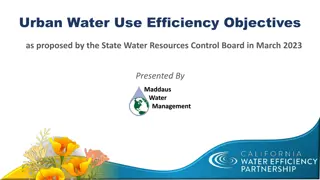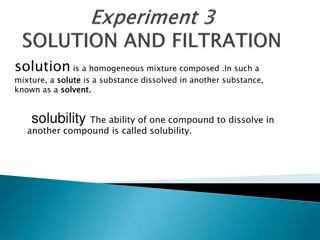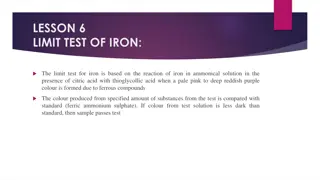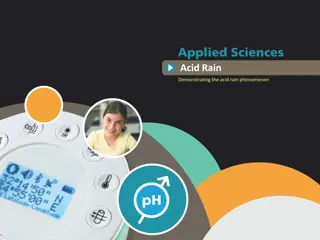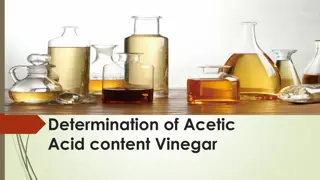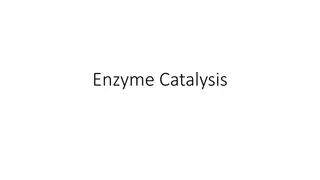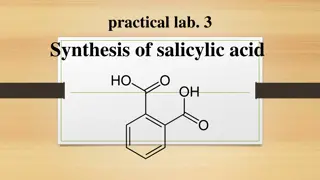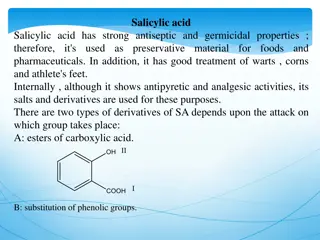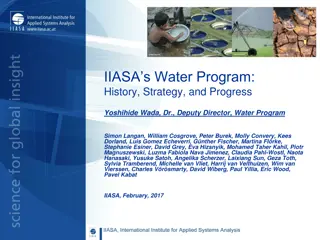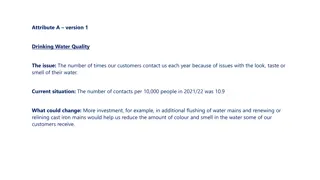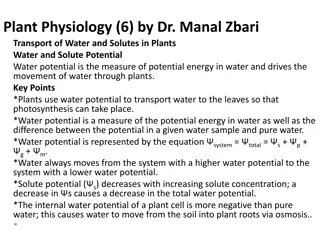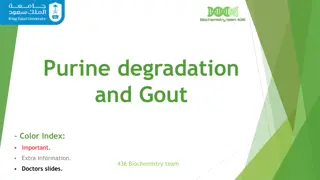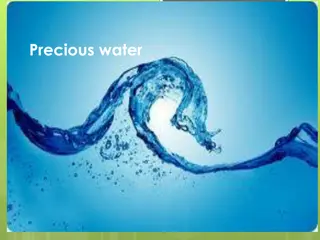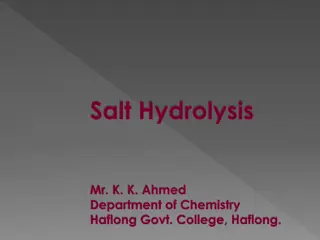
Understanding Acid-Base Reactions in Water Solutions
Explore the behavior of acids and bases in water solutions through experiments and observations. Learn how acids produce ions in aqueous solutions and discover the generation of hydrogen and hydroxide ions in neutralization reactions.
Download Presentation

Please find below an Image/Link to download the presentation.
The content on the website is provided AS IS for your information and personal use only. It may not be sold, licensed, or shared on other websites without obtaining consent from the author. Download presentation by click this link. If you encounter any issues during the download, it is possible that the publisher has removed the file from their server.
E N D
Presentation Transcript
What Happens to an Acid or a Base in a Water Solution?
Do acids produce ions only in aqueous solution? Let us test this------ Activity : Take about 1g solid NaCl in a clean and dry test tube and set up the apparatus as shown in Fig. Add some concentrated sulphuric acid to the test tube. What do you observe? Is there a gas coming out of the delivery tube?
If the climate is very humid, you will have to pass the gas produced through a guard tube (drying tube) containing calcium chloride to dry the gas.
Test the gas evolved successively with dry and wet blue litmus paper In which case does the litmus paper change colour? On the basis of the above Activity, what do you infer about the acidic character of: (i) dry HCl gas (ii) HCl solution?
This experiment suggests that hydrogen ions in HCl are produced in the presence of water. The separation of H+ ion from HCl molecules cannot occur in the absence of water. HCl + H2O H3O+ + Cl Hydrogen ions cannot exist alone, but they exist after combining with water molecules. Thus hydrogen ions must always be shown as H+(aq) or hydronium ion (H3O+). H+ + H2O H3O+
We have seen that-- acids give H3O+ or H+(aq) ion in water. Let us see----- what happens when a base is dissolved in water. Bases generate hydroxide (OH ) ions in water. Bases which are soluble in water are called alkalis.
Now as we have identified that all acids generate H+(aq) and all bases generate OH (aq), we can view the neutralisation reaction as follows Let us see what is involved when water is mixed with an acid or a base
Activity Take 10 mL water in a beaker. Add a few drops of concentrated H2SO4 to it and swirl the beaker slowly. Touch the base of the beaker. Is there a change in temperature? Is this an exothermic or endothermic process?
The process of dissolving an acid or a base in water is a highly exothermic one Care must be taken while mixing concentrated nitric acid or sulphuric acid with water. The acid must always be added slowly to water with constant stirring. If water is added to a concentrated acid, the heat generated may cause the mixture to splash out and cause burns. The glass container may also break due to excessive local heating.
Look out for the warning sign shown in Fig. Warning sign displayed on containers containing concentrated acids and bases
Mixing an acid or base with water results in decrease concentration of ions (H3O+/OH ) per unit volume. in the Such a process is called dilution and the acid or the base is said to be diluted.
Q U E S T I O N S 1. Why do HCl, HNO3, etc., show acidic characters in aqueous solutions while solutions of compounds like alcohol and glucose do not show acidic character? 2. Why does an aqueous solution of an acid conduct electricity? 3. Why does dry HCl gas not change the colour of the dry litmus paper?
Q U E S T I O N S 4. While diluting an acid, why is it recommended that the acid should be added to water and not water to the acid? 5. How is the concentration of hydronium ions (H3O+) affected when a solution of an acid is diluted? 6. How is the concentration of hydroxide ions (OH ) affected when excess base is dissolved in a solution of sodium hydroxide?
FOR MORE QUERIES: YOU CAN LOG IN TO WEBSITE www.scienceeasylearning.wordpress.com YOU CAN ALSO LIKE MY FB PAGE THAT IS: KKCHAUHAN https://www.facebook.com/kkchauhanvision/





